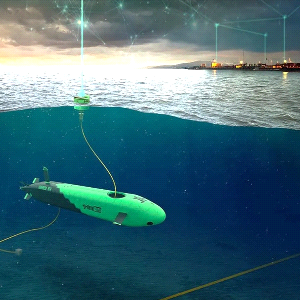Underwater Infrastructure Protection Systems - Market and Technology Forecast
Amsterdam, NL - October 06, 2025 -
Recent incidents in the Baltic Sea, including the suspected sabotage of submarine cables and pipelines, have significantly altered the strategic outlook on underwater infrastructure security. Historically, the responsibility for protecting these assets, critical for energy transmission and global communications, rested primarily with the companies that owned and operated them. However, with increasing geopolitical tensions and the potential for large-scale disruptions, national militaries are stepping in to assume a more central role.Military involvement introduces a paradigm shift in how underwater infrastructure is safeguarded. Armed forces bring access to high-end surveillance, detection, and response systems - far beyond the reach of commercial operators. These include military-grade sonar arrays, autonomous underwater vehicles (AUVs), deep-sea threat detection platforms, anti-sabotage monitoring systems, and integrated command-and-control infrastructure. Such capabilities not only strengthen deterrence but also ensure a rapid response to illicit intrusions or attacks.
Recent incidents in the Baltic Sea, including the suspected sabotage of submarine cables and pipelines, have significantly altered the strategic outlook on underwater infrastructure security. Historically, the responsibility for protecting these assets, critical for energy transmission and global communications, rested primarily with the companies that owned and operated them. However, with increasing geopolitical tensions and the potential for large-scale disruptions, national militaries are stepping in to assume a more central role.
Military involvement introduces a paradigm shift in how underwater infrastructure is safeguarded. Armed forces bring access to high-end surveillance, detection, and response systems - far beyond the reach of commercial operators. These include military-grade sonar arrays, autonomous underwater vehicles (AUVs), deep-sea threat detection platforms, anti-sabotage monitoring systems, and integrated command-and-control infrastructure. Such capabilities not only strengthen deterrence but also ensure a rapid response to illicit intrusions or attacks.

UUV remote control - Image Source: HonuWorks
Related Studies
